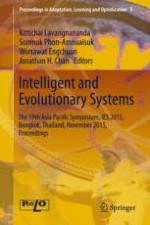This PALO volume constitutes the Proceedings of the 19th Asia Pacific Symposium on Intelligent and Evolutionary Systems (IES 2015), held in Bangkok, Thailand, November 22-25, 2015. The IES series of conference is an annual event that was initiated back in 1997 in Canberra, Australia. IES aims to bring together researchers from countries of the Asian Pacific Rim, in the fields of intelligent systems and evolutionary computation, to exchange ideas, present recent results and discuss possible collaborations. Researchers beyond Asian Pacific Rim countries are also welcome and encouraged to participate. The theme for IES 2015 is “Transforming Big Data into Knowledge and Technological Breakthroughs”.
The host organization for IES 2015 is the School of Information Technology (SIT), King Mongkut’s University of Technology Thonburi (KMUTT), and it is technically sponsored by the International Neural Network Society (INNS). IES 2015 is collocated with three other conferences; namely, The 6th International Conference on Computational Systems-Biology and Bioinformatics 2015 (CSBio 2015), The 7th International Conference on Advances in Information Technology 2015 (IAIT 2015) and The 10th International Conference on e-Business 2015 (iNCEB 2015), as a major part of series of events to celebrate the SIT 20th anniversary and the KMUTT 55th anniversary.
